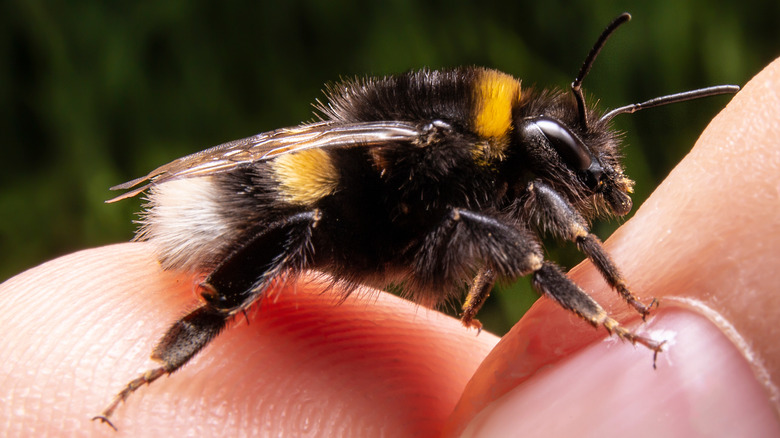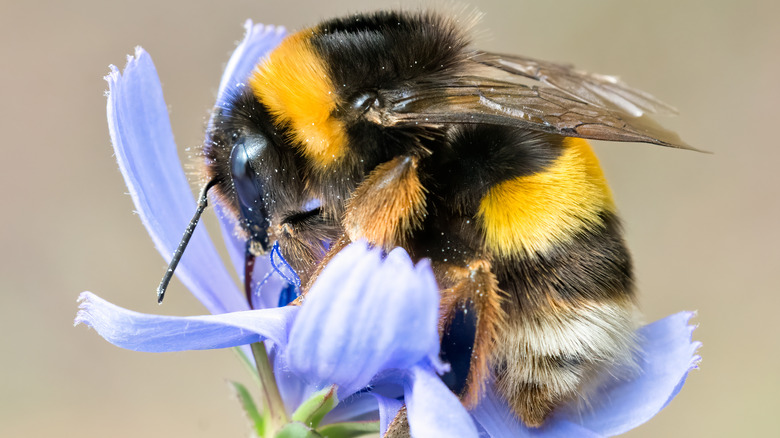Bumblebees Can Fly Higher Than You Ever Thought Possible
Time and time again, Hymenoptera Apoidea Anthophila, otherwise known as bees, have reminded us how wrong we'd be to underestimate their power. Bees build their own cities with roads, tunnels, and infrastructure (via Scientific American), share solidarity with the working people as subjects of a monarchy (via American Scientist, posted at JSTOR), communicate through interpretive dance (via Discovery), are capable of associative learning (via Animal Behaviour, posted at Science Direct), and may even possess cognitive maps (via Phys). Some bees can fly fast — between 12 and 20 miles per hour (via School of Bees) — and can fly over four miles at a time (via Carolina Honeybees).These capable creatures outpace our implicit expectations of what such a familiar, relatively ordinary insect can achieve.
The bees have done so yet once more. An experiment conducted on male wild bees in Sichuan, China, reveals the bees have upstaged us again: They may be able to fly as high as Mount Everest itself (via Science).
Six Chinese bees were tested
According to Science, researchers kidnapped six adult male bumblebees from their residence(s) in Sichuan, China. Scientists locked each bee alone in a plexiglass box or flight chamber. To simulate the lack of available oxygen present at higher altitudes of earth's atmosphere, the researchers gradually reduced the air pressure within the box via a pumping process, and attentively studied the effects on their subjects.
Nearly all the bumblebees — whose home sits at an altitude of more than 10,000 feet — successfully reached simulated heights equivalent to over 26,000 feet. That's 21 times the height of the Empire State Building (via Britannica). Two bees surpassed 29,000 feet in simulated height. That's nearly 200 feet higher than the highest point of Mount Everest (via World Bulletin).
One bee of the six only made it up to about 2,500 feet (via Nature). Even that's a steep height for a bee.
How did the bees do it?
The study was conducted by Michael Dillon of the University of Wyoming in Laramie and Robert Dudley of the University of California, Berkeley. Dillon and Dudley's study, published in 2014 in Biology Letters (posted at The Royal Society Publishing), also included an analysis of the bees' aerodynamic movements as air pressure dropped and height increased. How exactly did these Sichuan bees do it?
After the conclusion of the test, Dillon and Dudley watched reduced-speed footage of the bees' movement patterns mid-flight. They noticed the bees were moving their wings differently, compensating for the reduced air pressure by expanding their wings' range of motion as they flapped (via Smithsonian). "They're essentially sweeping their wings through a wider arc, which means they're pushing down more air molecules. Increasing the frequency of wing beats is one way to do that but ... it's likely this is a cheaper alternative," Dillon explained.
This doesn't mean bees actually hang out atop Mount Everest. Bees expend their energy economically based on reward, and flying 8,848 feet is, well, a lot of work. But as Douglas Altshuler, a scholar of animal flight at the University of British Columbia, phrased it: "Wow, that's high" (via Nature).


